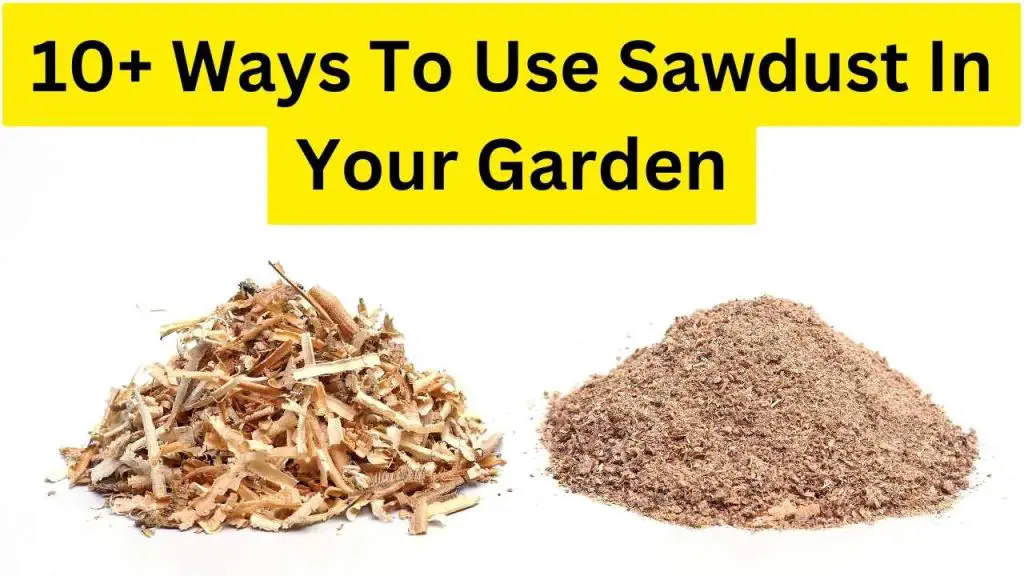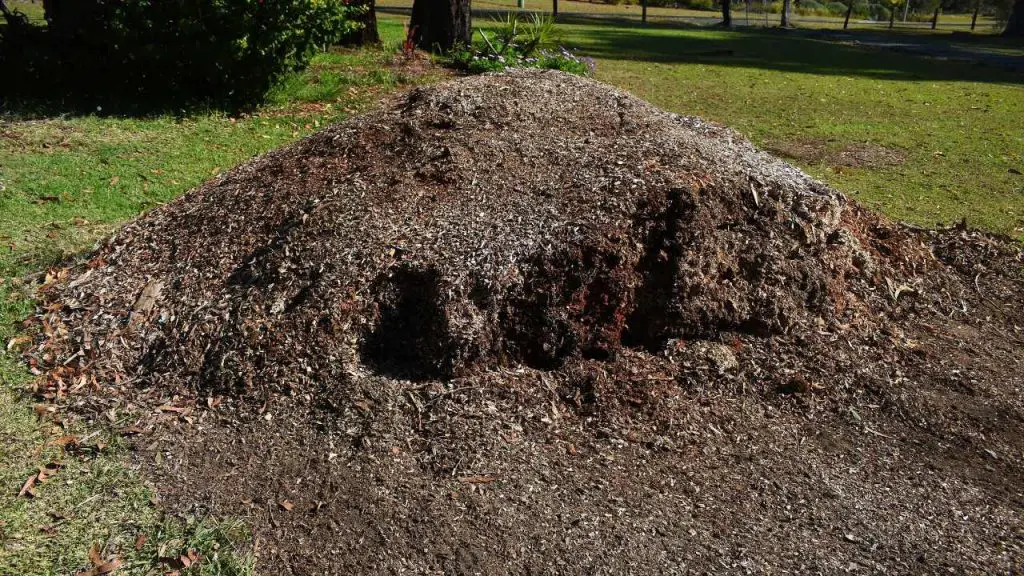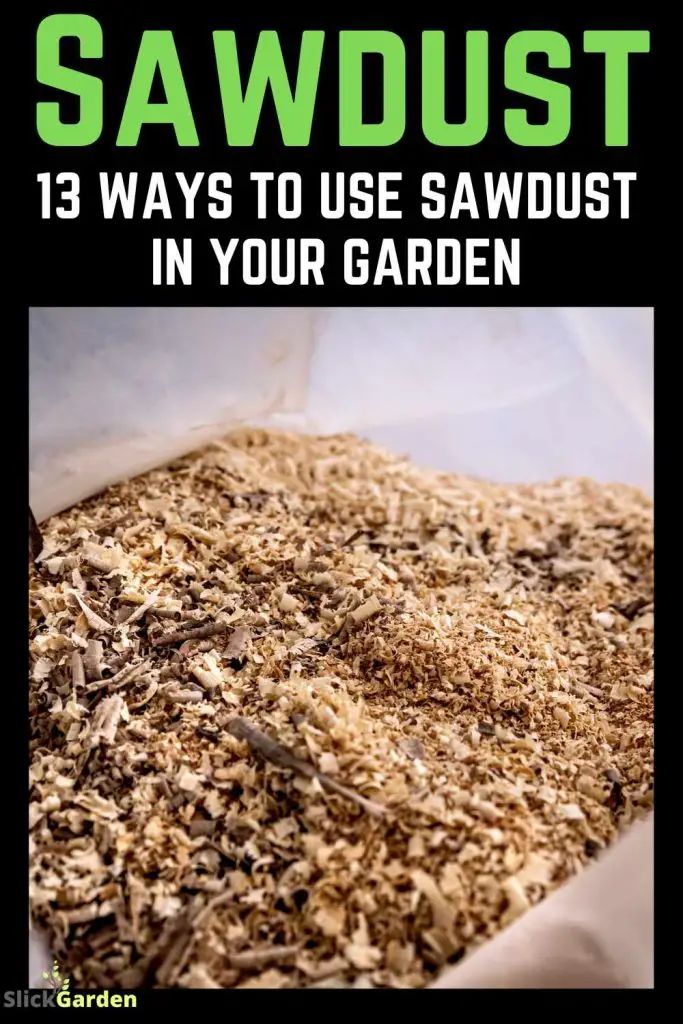After the construction work at your home, you will see there is sawdust waste accumulating because of carpentry projects.
Most people throw this waste away but they don’t know how valuable the material is as you can use it in your garden.

You can use sawdust in different ways in your garden. In this article, I will tell you how you can use sawdust in different beneficial ways for the plants.
1- USE OF SAWDUST IN COMPOST PILE
You can add sawdust to the compost pile. As you know, compost contains all the basic nutrients that are needed by the plants.
To make compost, you add different wasted materials such as peels of different vegetables and fruits, coffee grounds, and others. You can make your compost more rich by adding sawdust.
The addition of this fluffy material creates a space in your compost that helps to enter oxygen and do its work properly.
This is a brown compost material and a good source of carbon and carbohydrates. You should layer brown and green materials in the compost pile—green material like grass clipping, food waste, and when your works best which star does.
The ratio of brown material and green material should be 4:1. You can use sawdust as a brown material in a compost pile. For a perfect compost, first make a 4-inch layer of sawdust followed by a one-inch layer of green material.
Sawdust can break down more quickly than other brown materials so it is better to use it than newspaper or cardboard.
2- SAWDUST AS A SOIL AMENDMENT
You can also use it as a soil amendment. This is the organic matter that works best for hard compacting and clay soil.
If the soil of your garden is compacted then the roots of the plant will not find space to expand in the soil because of the hardness of the soil. Sawdust can be used to improve the soil quality so you can grow your favorite plants.
Like other organic materials, it also breaks down slowly. When you use fertilizer that contains chemicals they work faster as compared to the organic material but such fertilizers can also damage your plant.
On the other hand, if you use organic matter they will not harm your plants and boost them slowly. You can apply sawdust periodically but it is better to apply the sawdust to the garden before planting.
When you apply sawdust at the end of the growing season it will take its time to decompose. If you want to amend a large growing area, you can spread to two three inches of sawdust across the surface of the area.
In case, your garden has clay soil then it will take some time to improve after the application of sawdust. You should add small amounts of sawdust continuously during the growing season.
3- BEST FEED FOR ACID-LOVING PLANTS WITH SAWDUST
The application of sawdust in the soil will improve the acidic level of the soil. Before using sawdust for your soil it is better to perform a soil test, and then it will tell you about the pH of the soil.
Soil tests have many benefits because their results tell you about the shortage of nutrients in the soil.
Before adding sawdust to the soil, you should also make a clear decision about the vegetables or fruits you want to grow. This amendment is best for acid-loving plants.
The use of sawdust is very easy as you have to apply a layer of sawdust on the top of the soil. If you want to use compost to improve the acidity of the soil then there are better decisions than this. You must use sawdust at the start of the growing season to keep your crop more healthier.
4- STORE ROOT CROPS AND BULBS IN SAWDUST
You can use dry sawdust for storing winter root crops such as turnips, beets, and carrots in winter. The storing process is very easy. Following are the simple steps:
- Take a container and spread a light layer of sawdust in the bottom.
- Now start putting your root crops on the layer of sawdust. Make sure individuals do not touch each other. This will help to avoid the spread of mold.
- After placing the crop the next step is covering this layer with fresh sawdust.
- Now repeat all these steps until the container is full of the crops you want to store.
- The ideal temperature for storing your crops is between 35 to 50 degrees Fahrenheit. A garage or a basement is a perfect place for storing.
5- SAWDUST AS SLUG CONTROL
You can use sawdust as a slug repellent. This is the best organic way to fight slugs as it will not damage your plants. You can use sawdust to control the slugs and protect your plants.
Take sawdust and apply a layer around the base of your favorite plants. Make sure you are using a small amount of sawdust and avoid burying the bottom leaves when you apply.
As you are not using a large amount of sawdust it cannot be a source of nitrogen for your plants.

6- SAWDUST HELP TO RETAIN MOISTURE IN THE SOIL
The moisture level of the soil plays a very important role in the growth of any plant. To maintain the moisture of the soil, mix sawdust with ash or urea.
Now piled this mixture between the beds and rows. It will help to retain the moisture in the soil because evaporation stops.
7- SAWDUST AS AN INSULATING AND MULCHING MATERIAL
Sawdust works as an insulator for thermophilic crops. Your plants will be protected from cold. Sawdust also performs the function of a good insulator because it protects your plants from freezing and allows air to enter the soil.
It will also prevent the development of fungi and different bacterial infections that are a big threat to the healthy growth of your plants. There are many benefits of mulch.
It helps to retain the moisture in the soil. You will see after the application of this mulching material the soil will remain moist for a long time. When you use sawdust as a mulching material it will improve the physical properties of the soil.
This is an expensive mulching material that is used to keep the upper layer from overheating in the heart of summer.
Keep Reading;
- 15 Simple And Inexpensive Homemade Fertilizers
- How To Improve The Fertility Of The Potting Soil Cheaply?
- 10 Magical And Organic Fertilizers For Your Vegetable Garden
- Cheap And Organic Fertilizers For Your Houseplants
8- UAE SAWDUST FOR SEED GERMINATION
As it is explained earlier you can use sawdust to maintain the moisture level of the soil. Most gardeners not only use this natural material for mulching or as a fertilizer but also for the germination of seeds.
If you want sawdust to work well for the germination of seeds then you must use rotted sawdust from deciduous trees. Avoid using coniferous tree materials.
When you use sawdust as a substrate for the germination of seeds then you can easily transplant your young seedlings as it will not damage their roots. Take a small container and fill it with sawdust.
Now seeds must be poured onto wet sawdust. After that sprinkle a thin layer of sawdust. You should not skip the application of the second year of sawdust because it will help to keep the seeds moist, otherwise, you have to water it to keep the seeds moist.
It is better to cover the seed container with polythene to keep the soil warm. Make sure there must be a small hole in the polythene so it will allow the air to enter. One more suggestion is that you must keep the seed container in a warm place to speed up the germination process.

9- YOU CAN USE SAWDUST AS A BAKING POWDER FOR THE SOIL
The other advantage of sawdust is that you can use it to lose the soil. You can use sawdust in different ways to lose the soil.
- Sawdust works best for heavy or clay soil. As this type of soil is very compacted the roots of the plants can’t spread in the soil. When you are preparing your beds for planting new plants. First, dig the soil and add rotted sawdust to it. When you apply sawdust in the soil it will help to retain the moisture in the soil.
- If you are growing those edible plants that have a long growing season then you must apply a layer of sawdust between the rows.
10- BACKFILLING TRACKS
You always make a path between the beds in your garden. So you can easily walk between the beds to look after your plants.
Due to heavy rain, these paths soon become limp and turn impenetrable. You need something to fill these gaps between the paths.
Sawdust is the best material that you can use for this purpose. You can also use crushed stone, broken slate, or bricks but they can’t perform the right function.
Sawdust can do best when you apply it between the paths. It will not only eliminate the dirt but also help to improve the structure of the soil in your garden.
11- USE OF SAWDUST IN GREENHOUSE
You can use rotted sawdust with manure in the greenhouse. The perfect time for using sawdust in the greenhouse is in spring or autumn. The application of sawdust makes it possible for your plants to absorb nutrients easily from the soil.
The use of sawdust is very easy. You just need to apply a layer of manure on the top of the soil. After that sprinkle sawdust with limestone flour. With the help of a rake, you can mix all the material.
12- SAWDUST HELP TO BOOST ORCHARD FRUIT AND BERRY YIELDS
If you are an experienced gardener then you know that fruit trees need mycorrhizae and mycelium to grow. The falling leaves and the branches that drop provide a suitable environment for fruit trees.
But in a home garden, most people keep their garden clean so the fruit trees can’t get full advantage of the substrate.
To increase the heat of your fruit trees you can use sawdust. Apply a layer of sawdust around the bottom of each tree.
Avoid making a pile of sawdust against the trunk of fruit trees because it will cover the grafted areas on the trunk.
13- GROW TOMATOES IN SAWDUST
Sawdust maintains moisture that is needed by your tomato plants. When you grow tomatoes in order then your plant will be protected from the infection of soil-borne diseases.
For growing tomatoes in sawdust, you need a container with drainage holes. Now fill the container with sawdust.
Now transplant your young seedlings in this container. You can apply a water-soluble fertilizer weekly to fulfill the nitrogen needs of the plant.
